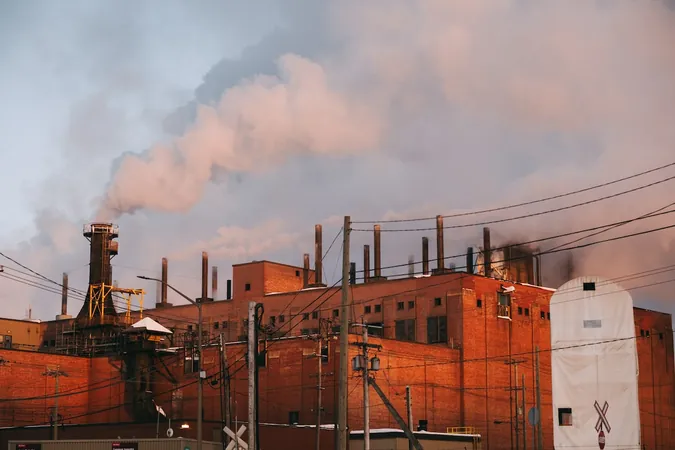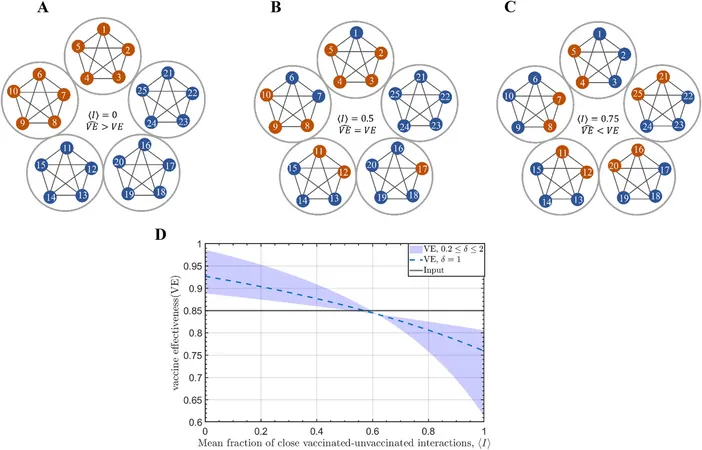
The HMPV Virus in China: What You Need to Know About This Respiratory Illness
2025-01-06
Author: Liam
Overview of HMPV
The human metapneumovirus, or HMPV, is capturing attention in China as health officials report an increase in respiratory illnesses. But what is HMPV, and should it concern people in the United States? Experts weigh in on the situation.
While there has been speculation surrounding HMPV as a possible cause for rising hospitalizations in China, health authorities have yet to confirm this. Reports from China's Center for Disease Control and Prevention suggest the uptick in cases may be more closely associated with influenza A. Nevertheless, fears of a potential epidemic linked to HMPV are rising, although specialists urge the public to stay calm.
Dr. Carla Garcia Carreno, the Director of Infection Prevention and Control at Children’s Medical Center Plano, reassures, "The concern for a pandemic can be put at rest. This virus is not new, and people have some immunity against it." She notes that HMPV has been around for some time and isn’t as unpredictable as COVID-19.
What is HMPV?
HMPV is a virus responsible for causing a variety of respiratory illnesses affecting individuals of all ages, particularly young children, the elderly, and those with weakened immune systems. The duration and severity of the illness can vary, similar to other viral respiratory infections.
Common Symptoms of HMPV
Typical symptoms associated with HMPV include: - Cough - Fever - Nasal congestion - Shortness of breath
According to the CDC, symptoms may escalate to conditions like bronchitis or pneumonia, resembling those caused by other respiratory viruses.
Is HMPV a New Virus?
Not at all. HMPV was identified in 2001 and belongs to the Pneumoviridae family, which includes the well-known respiratory syncytial virus (RSV). Researchers suggest it may have been circulating even longer and typically makes its rounds in the U.S. during the winter and spring months.
Comparing HMPV to COVID-19
Experts emphasize that the current HMPV cases in China should not alarm anyone as it only accounts for a minor percentage of respiratory viruses circulating. According to recent CDC data, HMPV represents less than 2% of weekly positive tests, while influenza comprises nearly 19% and COVID-19 just over 7%. For a virus to be classified as widespread, it must exceed 10% of positive test results for two consecutive weeks – and at the current rate of 1.9%, HMPV falls well below this threshold.
In pediatric cases, it is estimated that HMPV contributes to about 10% to 12% of respiratory infections among children, with most cases being mild. However, about 5% to 16% of affected children might develop a lower respiratory tract infection, such as pneumonia.
Transmission and Preventive Measures
HMPV spreads through direct contact with an infected individual or by touching contaminated surfaces. Unfortunately, there is currently no vaccine available for HMPV, unlike the vaccines available for the flu and COVID-19. "However, the preventive measures we’ve learned from COVID-19 can be applied here," advises Dr. Garcia Carreno.
To protect yourself: - Practice good hand hygiene by washing hands often with soap and water. - Avoid close contact with those who are ill. - If you are sick, maintain distance from others and wear a mask in public spaces to reduce the risk of transmission.
In summary, while HMPV is a respiratory virus to be aware of, it poses no immediate threat akin to COVID-19. Staying informed and practicing good hygiene can significantly mitigate the risks associated with HMPV and other respiratory illnesses. Keep your family informed and healthy as we navigate through the colder months!









 Brasil (PT)
Brasil (PT)
 Canada (EN)
Canada (EN)
 Chile (ES)
Chile (ES)
 Česko (CS)
Česko (CS)
 대한민국 (KO)
대한민국 (KO)
 España (ES)
España (ES)
 France (FR)
France (FR)
 Hong Kong (EN)
Hong Kong (EN)
 Italia (IT)
Italia (IT)
 日本 (JA)
日本 (JA)
 Magyarország (HU)
Magyarország (HU)
 Norge (NO)
Norge (NO)
 Polska (PL)
Polska (PL)
 Schweiz (DE)
Schweiz (DE)
 Singapore (EN)
Singapore (EN)
 Sverige (SV)
Sverige (SV)
 Suomi (FI)
Suomi (FI)
 Türkiye (TR)
Türkiye (TR)
 الإمارات العربية المتحدة (AR)
الإمارات العربية المتحدة (AR)